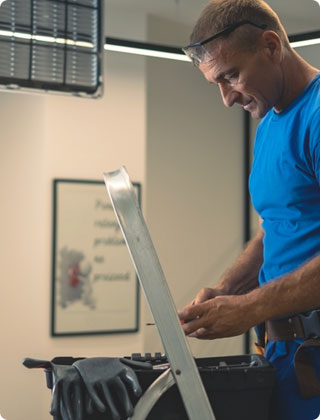MENU


Mold, often associated with forgotten leftovers in the back of the fridge, is actually a complex organism that can appear anywhere from damp basements to behind your pristine wallpaper. Teams like O2 Mold Testing are mold detectives, equipped with an impressive array of tests to track down and identify these fungal intruders.
Each method in the mold toolkit is designed for specific scenarios - whether it's a visible patch on the wall or an invisible spore lurking in the air. Our approach blends science, technology, and a bit of investigative prowess to ensure that homes and offices aren't just visually clean but also deeply sanitized from these microscopic squatters.
Ever spotted a dark, mysterious splotch on your wall and wondered if it's an abstract art piece left by mold? The first detective in our mold investigation kit is the Visible Mold Test. It's like choosing between a shovel (Bulk Sample), sticky tape (Tape Lift), or a magic wand (Swab Test) to uncover the truth behind that shady spot. Bulk Samples might give you the whole story, but could leave a scar on your beautiful wall. Tape Lifts are gentler, like a butterfly kiss on the surface. Swab Tests, however, can be a bit of a brute and might upset the mold, making it hard to peek under its microscopic hood.
Think of Standard Air Tests as capturing a moldy fragrance in the air. A portable air pump plays the role of a vacuum cleaner, but instead of dust, it's after mold spores. It's a bit of a Goldilocks situation: too little air, and you might miss the party; too much, and you'll have spores bouncing off like it's a trampoline.
Mold likes to play hide and seek in places like behind your walls or under the floor. Wall Cavity Air Tests are like sending a secret agent to these hidden nooks. Similar to its air test cousin, this method often requires multiple attempts - because everyone knows mold is a master of disguise.
Enter the world of ERMI, the Environmental Relative Moldiness Index. It sounds like a sci-fi gadget but is actually a dust-analyzing, DNA-testing whiz. Developed by the U.S. EPA, it profiles 36 different fungi. However, it's a bit of a diva and doesn't always play nice, which is why even the EPA raises an eyebrow at its results.
ARMI, the budget-friendly cousin of ERMI, checks for 13 types of fungi. It's like ERMI went on a diet. Less comprehensive but still useful, ARMI is the practical choice when you want a general idea without breaking the bank.
Mold Specific Quantitative Polymerase Chain Reaction (MSQPCR) sounds like something out of a spy thriller. It's the James Bond of mold tests - fast, sophisticated, and a bit expensive. Instead of counting spores, it looks for their unique DNA, making it one of the sharpest mold tools in the shed.
EMMA testing sounds like a friendly neighbor but deals with serious business: detecting mycotoxins, the bad boys of the mold world. These toxins can affect health, so EMMA employs specialized dust samples to catch them red-handed.
Remember science class? The Petri Dish Test is like a school experiment but with mold. It's a slow dance, taking more than two weeks, as the mold samples waltz on different food sources. The result? A detailed profile of our mold suspect.
In conclusion, mold testing is not just a science; it's an art with a sprinkle of humor and intrigue. Whether it's the gentle touch of a Tape Lift or the high-tech prowess of MSQPCR, companies like O2 Mold Testing employ these diverse methods to ensure your environment is not just mold-free but also a story worth telling.